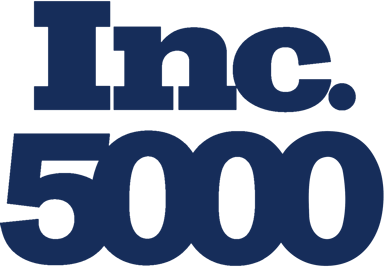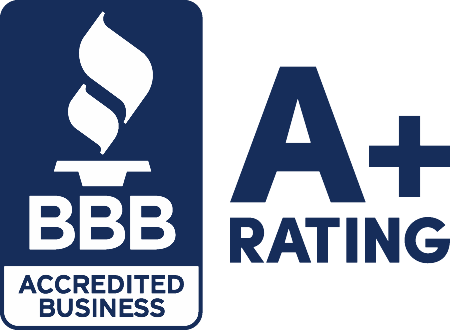What are SBA Lines of Credit?
Most people think of traditional term loans when they think of SBA loans. However, the SBA loan program also offers access to business lines of credit, also referred to as a credit line, through CAPLines, a component of the 7(a) loan program, which is the most common and popular SBA program, and includes SBA Express loans. CAPLines are a type of capline loan designed to help small businesses finance specific projects, contracts, or seasonal needs. SBA lines of credit are available in amounts up to $5 million with repayment terms as long as 10 years.
The US Small Business Administration (SBA) regulates and oversees the SBA loan program. It does not approve applications, nor does it provide funding. Instead, small business owners typically apply to one of three lending institutions: a commercial bank, a credit union, or an alternative business financing facilitator, such as United Capital Source (UCS).
The SBA sets the rules for SBA loans, including setting a maximum cap on interest rates and fees. The interest rate for SBA lines of credit is typically pegged to the Prime rate plus a spread and may be fixed or variable, depending on the lender and the specific product. In addition, the government agency partially guarantees SBA loans up to 85%. With SBA-guaranteed loans, lenders can offer larger borrowing amounts at lower interest rates and longer repayment terms.
As a part of the 7(a) loan program, CAPLines of credit have a maximum credit limit of $5 million. The actual line of credit you’ll receive depends on your creditworthiness, business financials, business needs, and your available collateral.
A business line of credit functions similarly to a credit card. You have an available pool of cash, defined by the credit limit, from which you can draw funds as needed. This type of credit line offers flexible funding for short-term business needs.
You only pay back what you draw against the line of credit, plus any interest. Repayment is subject to specific credit terms, including the repayment period and conditions set by the lender and SBA. It’s ideal for accessing working capital when the business need arises.
The SBA provides both fixed lines of credit and revolving lines of credit. With a fixed line of credit, the available credit limit decreases when you draw funds, but it does not replenish when you repay.
A revolving line of credit does replenish as you pay it back. For example, if you have a $50,000 line of credit and draw $10,000, your available credit reduces to $40,000. If you repay $5,000 plus interest, your available credit increases to $45,000.
Managing Cash Flow with SBA Lines of Credit
Effectively managing cash flow is critical for small businesses, and SBA Lines of Credit are specifically designed to help with this challenge. By providing a revolving line of credit, these products allow businesses to access funds whenever they need to cover short-term expenses, such as increased labor costs during busy seasons, purchasing eligible inventory, or handling other operational costs that arise with seasonal increases in demand.
One of the key advantages is the ability to convert short-term assets, such as accounts receivable and eligible inventory, into immediate cash. This means that instead of waiting for customers to pay invoices, businesses can utilize their line of credit to bridge the gap, ensuring they have the necessary working capital to meet payroll, pay suppliers, or capitalize on new opportunities. As funds are repaid, the available credit replenishes, providing businesses with ongoing access to capital and enabling them to maintain a healthy cash flow throughout the year. By leveraging SBA lines of credit, small businesses can reduce the risk of cash shortages, avoid financial distress, and focus on growth and stability.
Common Uses of SBA Lines of Credit
SBA Lines of Credit are versatile financial tools that small businesses utilize to address various working capital and cash flow needs. One of the most common uses is financing inventory purchases, particularly ahead of seasonal sales increases or to capitalize on supplier discounts. Businesses also rely on these lines of credit to cover increased labor costs during peak periods, ensuring they can staff up without straining their cash reserves.
Managing accounts receivable and payable is another frequent application—SBA lines of credit allow small business owners to smooth out the timing gaps between when they pay suppliers and when they receive payment from customers. Additionally, these lines of credit can be used to finance the construction or rehabilitation of commercial or residential buildings, including essential expenses like utility connections and landscaping, making them a valuable resource for contractors and developers.
SBA lines can also help refinance existing debt, improve overall cash flow, and provide the working capital needed to pursue new business opportunities. With a range of credit options available from SBA Express lenders and other participating institutions, small businesses can find the right solution to meet their unique financing needs and support their ongoing success.
What are the different Lines of Credit available?
There are four main CAPLines of credit available, as well as an SBA Express line, also known as an Express line, with a maximum loan amount of $1 million. The SBA Express line offers a quick approval process, flexible usage, and a government guarantee, making it an ideal option for businesses requiring expedited funding. Each CAPLine program also has its own maximum loan limit, depending on the specific type and eligibility criteria. The builder’s line is a specialized loan program designed for construction contractors and homebuilders, aligning repayment periods with project completion timelines and offering tailored eligibility criteria and a short-term repayment structure to meet the unique needs of contractual construction projects.
Seasonal CAPLine
The seasonal line of credit provides business owners with working capital as needed throughout the year. The Seasonal CAPLine is specifically designed to help businesses manage cyclical working capital needs, offering short-term and seasonal financing to address fluctuations in cash flow during peak and off-peak periods. A business could use the funds for off-season periods, but it’s most often used to ramp up inventory and other costs during busy seasons.
The terms for the Seasonal CAPLine go up to 10 years. You can use your business’s accounts receivable or eligible inventory as collateral. You may also be required to sign a personal guarantee. The line of credit can be revolving or fixed.
Contract CAPLine
This CAPLine is intended only for contractors to fund costs related to fulfilling specific contracts. Contractors can use the funds to cover overhead costs, administrative expenses, or general project-related expenses directly associated with those specific contracts, including subcontracts and purchase orders.
If you use the funds for a contract, you must repay the invoice amount to the lender once the client has paid the invoice. The maximum maturity for Contract CAPLines is ten years, with terms ranging from one to ten years, and can be either fixed or revolving.
You cannot use Contract CAPLines for the following:
-
Permanent working capital.
-
Purchasing fixed assets like equipment and machinery.
-
Paying overdue taxes or refinancing business debt.
-
Financing contracts that are significantly underway.
-
Financing another contract.
-
Change of ownership for floorplan financing.
-
Covering a markup or profit.
Working CAPLine
The working capital CAPLine, also known as a working capital line of credit, provides short-term financing to cover everyday expenses, such as payroll or rent. The credit limit you receive is based on your business’s daily sales cycle and available collateral, which includes your existing assets. Eligible accounts receivable can also be used as collateral for this line of credit. As part of the documentation process, you will need to provide inventory reports. Working CAPLines are revolving, and terms go up to ten years.
Builder’s CAPLine
The builder’s line is a specialized loan program designed for construction contractors and homebuilders, offering short-term financing that aligns repayment periods with project completion timelines. The builder’s line features specific eligibility criteria, loan amount limits, and a short-term repayment structure tailored to contractual construction projects.
As its name implies, the builder’s line of credit is for construction contractors and homebuilders working on residential or commercial property. This builder’s line can be used to finance projects that rehabilitate residential properties, including new construction and renovation. Funds may also be used for on-site work such as utility connections and landscaping. The asset you use to secure the line of credit serves as collateral for the loan.
The business must repay the amount it borrowed for the building project upon selling the building or within 36 months, whichever comes first. The line is available as either revolving or fixed, and terms go up to five years.
What are the costs of SBA Lines of Credit?
CAPLines of credit maximum interest rates follow the same pattern as any SBA 7(a) loan, where it’s tied to the prime rate plus the lender’s spread. The following are the maximum amounts lenders can charge. Your actual rate will depend on the lender, your business, and your creditworthiness.
Lines of credit with a maturity of under 7 years:
-
Under $25k: Prime + 4.25%.
-
Between $25k-$50k: Prime + 3.25%.
-
Over $50k: Prime + 2.25%.
Lines of credit with a maturity of over 7 years:
-
Under $25k: Prime + 4.75%.
-
Between $25k-$50k: Prime + 3.75%.
-
Over $50k: Prime + 2.75%.
Like other SBA loans, there is also a fee for the guaranteed portion of the loan. The guarantee fee works as follows:
-
2% for CAPLines of $150,000 or less.
-
3% for CAPLines between $150,001 and $750,00.
-
3.5% for CAPLines over $750k + an additional 3.5% for the guaranteed amount over $1 million.
In addition to the guarantee fee, lenders may charge additional fees, such as collateral monitoring or administrative costs, especially for short-term working capital loans.
Unlike a lump sum loan, where you receive a single upfront payment, a line of credit allows you to draw funds as needed. CAPLines can be utilized for various business needs, including working capital, project costs, and other expenses associated with business operations.
What are the features of SBA Lines of Credit?
SBA Lines of Credit, offered through the Small Business Administration’s loan program, are designed to give small businesses flexible access to working capital. One of the standout features is the revolving line of credit structure, which enables businesses to draw funds as needed and repay them on a schedule that aligns with their cash flow. With a maximum loan amount of up to $5 million, these lines of credit can support a wide range of financing needs, from managing day-to-day expenses to funding larger, cyclical working capital requirements.
Interest rates on SBA lines are highly competitive, often lower than those found with traditional credit options, making them an attractive choice for small business owners looking to minimize borrowing costs. Repayment terms can extend up to 10 years, providing ample time for businesses to manage their cash flows and repay the loan without undue pressure.
SBA lenders, including banks and credit unions, offer these lines of credit with a partial guarantee from the SBA, which reduces the lender’s risk and increases access to credit for small businesses. This combination of a high maximum loan, flexible revolving line, and favorable interest rates makes SBA lines of credit a powerful tool for companies seeking to smooth out cash flow fluctuations and support ongoing growth.
How do I qualify for an SBA Line of Credit?
To qualify, you must meet the SBA’s basic eligibility criteria, specific program requirements, and the lender’s credit requirements. Additionally, the lender may have specific qualifications. Businesses may also need to provide collateral to secure the loan, depending on the loan amount and the lender’s policies. It is important to submit accurate financial statements as part of your application, as these documents demonstrate your financial health and support your loan qualification.
SBA Basic Eligibility
To be eligible, a business must:
-
Be a for-profit business.
-
Operate and be physically located in the US or its territories.
-
Meet the small business size standards as defined by the SBA.
-
Have the cash flow to handle loan repayments.
-
Not be eligible for or receive loan funds elsewhere.
-
Note: A new business may face additional requirements or limitations when applying for SBA lines of credit, as some programs require an established operational history.
CAPLine Program Requirements
-
Seasonal CAPLine: You must have at least one year in business and be able to demonstrate seasonality. New businesses are generally not eligible.
-
Contract CAPLine: Your business must have a history of completing contracts, the ability to fulfill new contracts, and be profitable.
-
Builder’s CAPLine: You must be a contractor and have a proven track record of successfully bidding on and completing projects, including renovations.
-
Working CAPLine: Your business must have inventory or accounts receivable.
Lender Qualifications
Each lender sets its own personal credit score, time in business, and annual revenue thresholds. SBA Express lenders, in particular, have the authority to approve and process applications more quickly than traditional lenders, resulting in faster funding decisions. Approved businesses we work with here at UCS typically meet the following qualifications:
-
Credit score of 650+.
-
At least two years in business.
-
Annual revenue of $350k+.
How do I apply for SBA Lines of Credit?
United Capital Source can assist you in applying to an SBA-approved lender or through a community development financial institution, which provides funding and support for small businesses, by following these steps.
Step 1: Ensure You Qualify
You’ll need a credit score between 650 and 700 and a healthy, consistent cash flow to avoid being declined for an SBA loan. How you intend to use the money also plays a significant role. You’ll need a detailed plan of how the funds will help you invest in and grow the business. When preparing your business plan, consider how an SBA line of credit can help you manage cash flow more efficiently by reducing your cash cycle and improving overall liquidity for your business.
Step 2: Gather Your Documents
Be prepared to provide:
-
Driver’s License.
-
Voided Business Check (for business bank account information).
-
Bank Statements.
-
Credit Report/Statement of Personal Credit History.
-
Business Tax Returns.
-
Credit Card Processing Statements.
-
Personal Tax Returns – 3 Years.
-
Business Tax Returns – 3 Years.
-
Business Plan (Not in all cases).
-
Personal Financial Statement.
-
List of Real Estate Owned or Business Leases, if applicable.
-
Debt Schedule/Loan/Rent/Lease Documentation
-
Deeds/Title/Ownership documentation for any collateral/Security
-
Current Profit & Loss Statements and Balance Sheet Year-to-Date
-
A/R and A/P Reports
-
United Capital Source 1 Page Application
For specific SBA programs, such as monitored lines offered through the SBA 7(a) Working Capital Pilot program, you may also need to provide additional documentation or ongoing reporting to meet enhanced credit monitoring requirements.
Step 3: Fill out the application
You can begin the application process by calling us or filling out our one-page online application. Either way, you’ll be asked to enter the information from the previous section along with your desired funding amount.
Step 4: Speak to a representative
Once you apply, a representative will reach out to you to explain the repayment structure, rates, and terms of your available options. This way, you won’t have to worry about any surprises or hidden fees during repayment.
Step 5: Receive approval
SBA Loans through our network generally take 3-5 weeks to process and get approved. Once approved and your file is closed, funds should appear in your bank account in a few business days.
What are the advantages of SBA Lines of Credit?
As part of the SBA loan program, CAPLines of credit offer high borrowing amounts, low interest rates, and longer repayment terms than most business lines of credit. The SBA guarantee reduces the risk for lenders.
The business owner only borrows – and repays – the funds needed to support the business. The flexibility allows companies to use the funds for a more targeted approach to solving business needs. SBA lines of credit can also help businesses manage their cash flows during periods of fluctuating revenue, providing access to funds to cover operational expenses and maintain business continuity.
Business lines of credit are great for funding unexpected challenges or new opportunities. Since you can draw the funds instantly, you’ll always have cash available to meet business needs.
The CAPLines program offers four different business-specific lines. That makes it easier to find the right business lines of credit to support your growth within your industry.
What are the disadvantages of SBA Lines of Credit?
All SBA loans and financing packages carry high approval requirements. In addition to meeting SBA eligibility, you must also qualify with the lender. Most SBA-approved lenders have high credit score requirements.
While some business lines of credit are available as unsecured financing, all CAPLines of credit require collateral and a personal guarantee. You must also demonstrate your business need for the specific CAPLine product, which can be challenging if your need is to cover fluctuating operational expenses such as increased labor costs during peak periods.
SBA Lines of Credit Pros & Cons
Pros:
-
High borrowing amounts – up to $5 million.
-
Both revolving lines and fixed lines of credit are available.
-
Low interest rates – follows the same rates as all SBA 7(a) loans.
-
The SBA partially guarantees CAPLines of credit.
-
Long repayment terms and limited fees.
-
There is a program available to meet most small business needs.
Cons:
-
Lengthy application and approval time.
-
Requires extensive paperwork.
-
Requires collateral and a personal guarantee.
-
Must demonstrate a business need for the specific line of credit.
Frequently Asked Questions
Here are the most common questions about SBA lines of credit.
What is the SBA Working Capital Pilot Program, and how is it different from other SBA lines of credit?
The SBA Working Capital Pilot Program is a specialized type of SBA credit line designed to provide flexible working capital solutions for small businesses. Unlike traditional SBA lines of credit, this pilot program offers more accessible eligibility requirements and flexible repayment terms, making it easier for a broader range of businesses to access the working capital they need. The program is intended to help businesses manage cash flow, cover short-term expenses, and support growth opportunities.
Is an SBA Line of Credit right for my business?
If your business can handle the rigorous application process and long funding time, SBA CAPLines of credit are the most advantageous business line of credit available.
However, some businesses prefer lines of credit over traditional term loans because of the fast funding time and low approval requirements.
If you need the money sooner or don’t meet SBA lender requirements, a different line of credit or business financing product would be a better option.
Are there other SBA business financing products?
Yes, the CAPLine of credit program is just one of the available SBA loan programs. Other options include:
-
SBA 7(a) Loans
-
Export Working Capital Program
-
SBA Export Express Loans
-
SBA 504 Loans (aka SBA CDC/504 Loans).
-
SBA Export Loans
What are my other Business Line of Credit options?
Business lines of credit remain one of the lesser-known small business financing options, but they are growing in popularity. Advancements in financial technology (fintech) and the growth of alternative online lenders give business owners more options than ever to finance their companies.
Some business lines of credit are available to borrowers with a credit score of 550 and can get funded in 1-3 business days. You can apply for a non-SBA business line of credit with United Capital Source or explore other available options. SBA programs may offer loans with higher amounts than those available from alternative lenders, providing more substantial funding for qualified businesses.
In addition to business lines of credit, you may also consider one of the following small business loans:
If you’re a business owner with poor credit, we also offer options for bad credit business loans.
SBA Lines of Credit – Final Thoughts
CAPLines of credit offer some of the lowest financing costs and most favorable terms of any business credit product. The drawback is that it’s challenging to qualify and takes a long time to get approval and fund the line of credit.
While other business lines of credit might have higher costs and lower borrowing amounts, they have shorter applications and much faster funding times. However, it is the best business line of credit option if you can deal with the application process and wait for the funds.
Contact us if you have any questions about CAPLines of credit or are ready to apply. Our loan executives can help you find the right financing package for your business.














